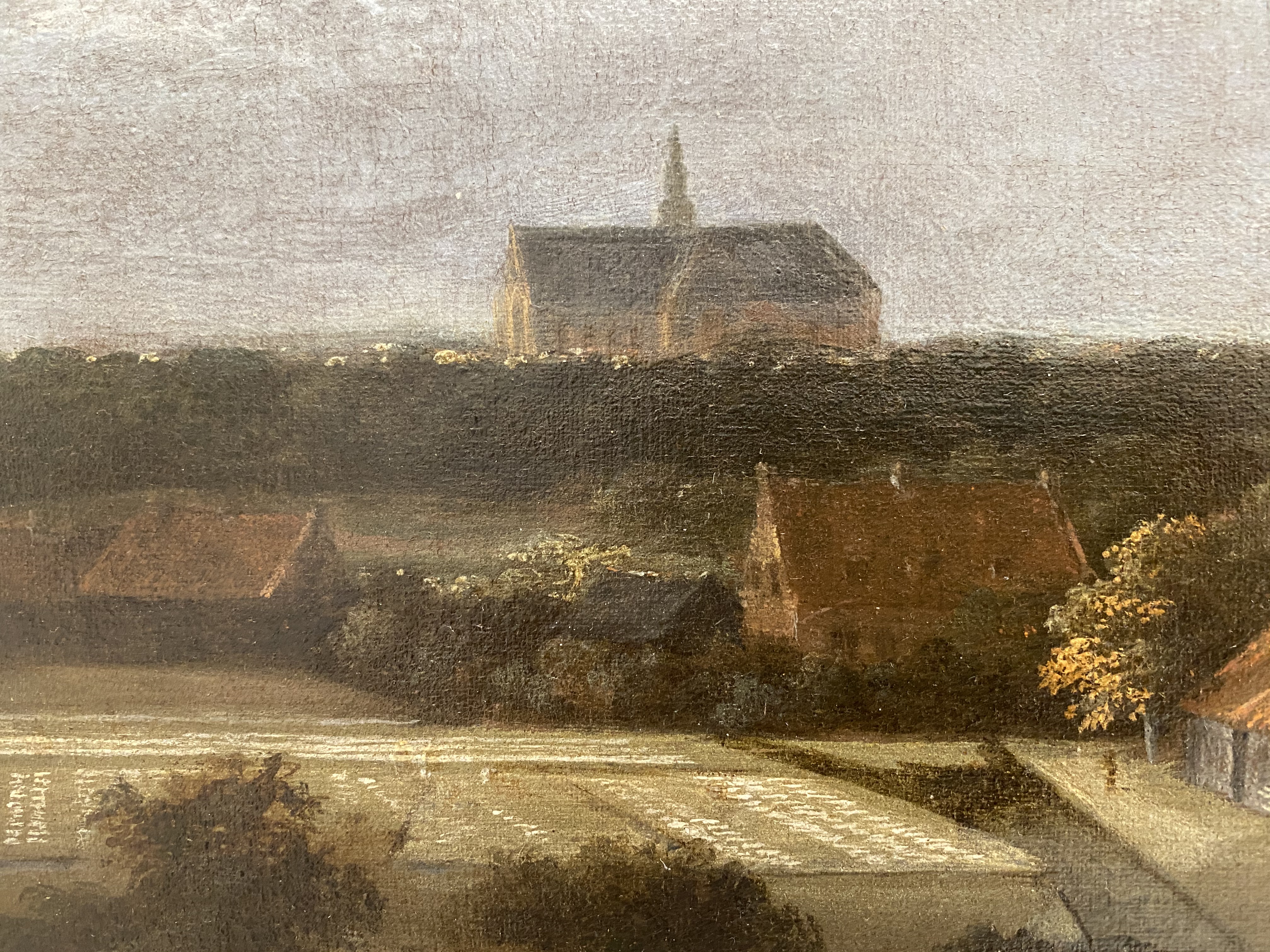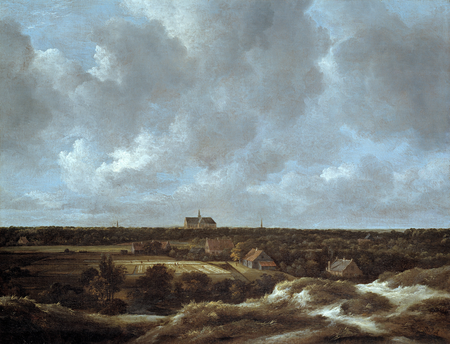Work of the Week # 7

About a year ago, the Timken took an excursion through the “low countries” with supporters of the museum. These are fun trips, made even more memorable by the expansion of friendships while looking at great art. On this occasion, I was part of a group that toured both large and small museums in Brussels, Amsterdam, the Hague, and Antwerp. It was spring, and being Northern Europe, it rained virtually nonstop. Perhaps that is why I recall so well a brilliantly sunny day in Haarlem. We passed tulip fields starting to bud en route to that coastal town. Wandering through the central pedestrian zone at mid-day, I was instantly reminded of the Timken’s painting by Jacob van Ruisdael, A View of Haarlem and Bleaching Fields. Ruisdael was born to an artistic family in Haarlem (either in 1628 or 1629, scholars are not sure) and he is buried there, too. His grave is in the Grote Kerk of Sant Bavo, the hulking silhouette of which occupies a central point on the horizon of the Timken’s picture.
Ruisdael made almost a thousand works during his lifetime. Many are topographical landscapes depicting the area around his hometown and the Dutch call these works Haarlempjes (little views of Haarlem). These canvasses are typically divided into a format that Ruisdael repeats again and again: the bottom third records the flat countryside from a slightly elevated perspective while the top two-thirds of the composition is devoted to the sky and billowing clouds. Haarlem shows up neatly, but discreetly, in these formulaic views and the Timken’s picture is no exception to that rule. The artist provides hardly any clues to Haarlem’s considerable charms. If you want a sense of what the place might have been like around Ruisdael’s time, you’ll need to consult Gerritt van Berckheyde’s The Great Market with St. Bavokerk Seen from the West (1696) which hangs today in the Frans Hals Museum. What captivated Ruisdael was the surrounding agricultural fields and dunes, located to the west of the city, and the changing weather that blew in from the North Sea. The textile industry, with its laborious processes of bleaching raw linen in the open air, was put on display for economic as much as for aesthetic reasons. Anyone who is deeply curious about linen manufacturing in Holland should consult Linda Stone-Ferrer’s article, “Views of Haarlem: A Reconsideration of Ruisdael and Rembrandt,” which appeared in The Art Bulletin [Sept. 1985]. Stone-Ferrer demonstrates how 17th-century maps and prints represented this industry’s importance for the citizens of Haarlem, including the artists.
Ruisdael’s cared little about cartographic specificity, however, which is a source of aggravation for some historians of Dutch art. A few of his landscapes bear titles claiming unique vantage points, but those titles have been proven inaccurate. A comparison of our painting to its closest siblings—related works can be found at the MFA, Boston, the Wadsworth Atheneum in Hartford, the Thyssen-Bornemisza in Madrid, the Kunsthaus Zurich, and the Mauritshuis and Rijksmuseum in the Hague and Amsterdam, respectively—doesn’t help. Almost all show Saint Bavo at, or near, their horizons and most also feature narrow, windswept bleaching fields in their foregrounds. Would we learn more if we ever brought these works together in an exhibition? Could mapping technologies help tease out their precise locations? I have been puzzling this out. Sadly, after many hours on museum databases and studying satellite images of coastal Holland on Google-earth, I have reached only modest conclusions: the Timken’s painting is among the largest and most emphatically horizontal of these particular Haarlemjpes. It likely purports to disclose a view of the city from the Northwest, but I can’t really be sure. What I do know with certainty is Ruisdael’s painting conjures the strongest possible feelings of place and its visual acuity—real or imagined—still has the capacity to transport us.
